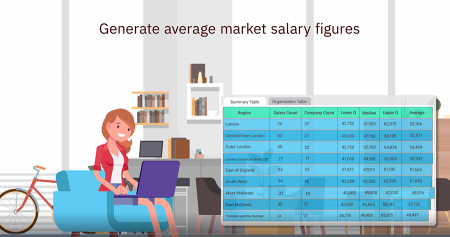Hybrid Working and Implications for Pay 2022

Despite the reopening of the economy and the withdrawal or easing of covid-related restrictions, many employers have opted to retain some of the measures that suddenly became necessary with the first lockdown two years ago, with ‘hybrid’ working patterns – under which staff divide their working time between home and the office – seemingly now far more widespread than they were before the pandemic. For some organisations, the experience of supporting home-working during the enforced closures necessitated by the ‘stay at home’ orders helped to dispel concerns they may previously have harboured about employee productivity, while staff often enjoyed improved work-life balance.
Putting home-working into practice on a longer-term, more formal basis presents certain key considerations for employers – for example, around how best to support those working in this way; how to ensure they can collaborate effectively with colleagues in the office; and how reward policies and practices (for example, in relation to location allowances) might be affected by increased home- or hybrid working.
We hope to gain a better understanding of how employers are approaching all these issues with our latest survey 'Hybrid Working and Implications for Pay 2022.' Please consider contributing your insights – as a thank you for your participation, as with all IDR research, we will send you a complimentary summary of the survey findings.
The survey also looks more broadly at other flexible working initiatives, specifically the four-day week, which has gained prominence recently thanks to a pilot programme about to be launched by 4 Day Week Global. Companies taking part will implement a four-day working week with no loss of pay for staff. The associated research project is mainly aimed at assessing the impact on productivity (and staff wellbeing). But there is an interesting side bar to the initiative. Reducing working time with no loss of pay involves an increase in hourly rates of pay. Therefore if reducing hours (and raising hourly pay rates) can be shown to boost productivity, this could be another blow to the notion that wage rises necessarily lead to price inflation – since higher productivity at a firm is unlikely to bring about increased costs for its goods and services. Given the current cost of living climate, and the arguments taking place about the association between inflation and pay rises, the results are likely to be keenly anticipated by interested academics, economists and employers.
Discover Pay Benchmarker
Pay Benchmarker is an impressive online pay tool which gives you access to up-to-date, searchable market data.
Capture data on salary levels and pay awards at the click of a button.
Analyse and manipulate complex pay data to provide accurate information to inform your reward decisions.
